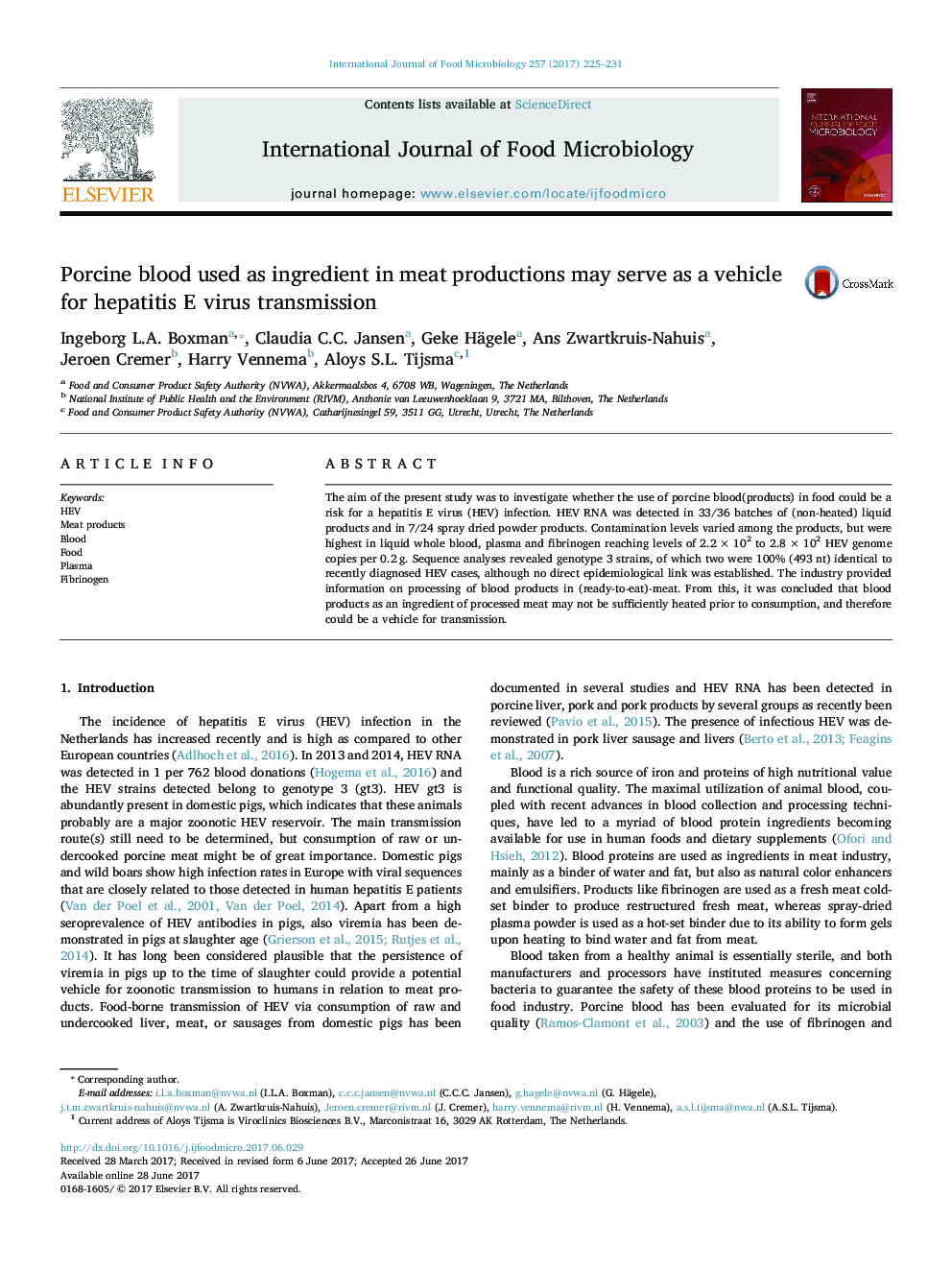| Article ID | Journal | Published Year | Pages | File Type |
|---|---|---|---|---|
| 5740672 | International Journal of Food Microbiology | 2017 | 7 Pages |
â¢Porcine blood products are an ingredient in many (ready-to-eat) meat preparations.â¢HEV RNA was detected, quantified and typed as gt3 in most of the tested products.â¢Liquid blood products are not heat-treated before entering the food chain.â¢HEV in liquid products may be insufficient inactivated in industrial processed meat.â¢Two of the obtained genotype 3c strains matched 100% with recent HEV cases.
The aim of the present study was to investigate whether the use of porcine blood(products) in food could be a risk for a hepatitis E virus (HEV) infection. HEV RNA was detected in 33/36 batches of (non-heated) liquid products and in 7/24 spray dried powder products. Contamination levels varied among the products, but were highest in liquid whole blood, plasma and fibrinogen reaching levels of 2.2Â ÃÂ 102 to 2.8Â ÃÂ 102 HEV genome copies per 0.2Â g. Sequence analyses revealed genotype 3 strains, of which two were 100% (493Â nt) identical to recently diagnosed HEV cases, although no direct epidemiological link was established. The industry provided information on processing of blood products in (ready-to-eat)-meat. From this, it was concluded that blood products as an ingredient of processed meat may not be sufficiently heated prior to consumption, and therefore could be a vehicle for transmission.
